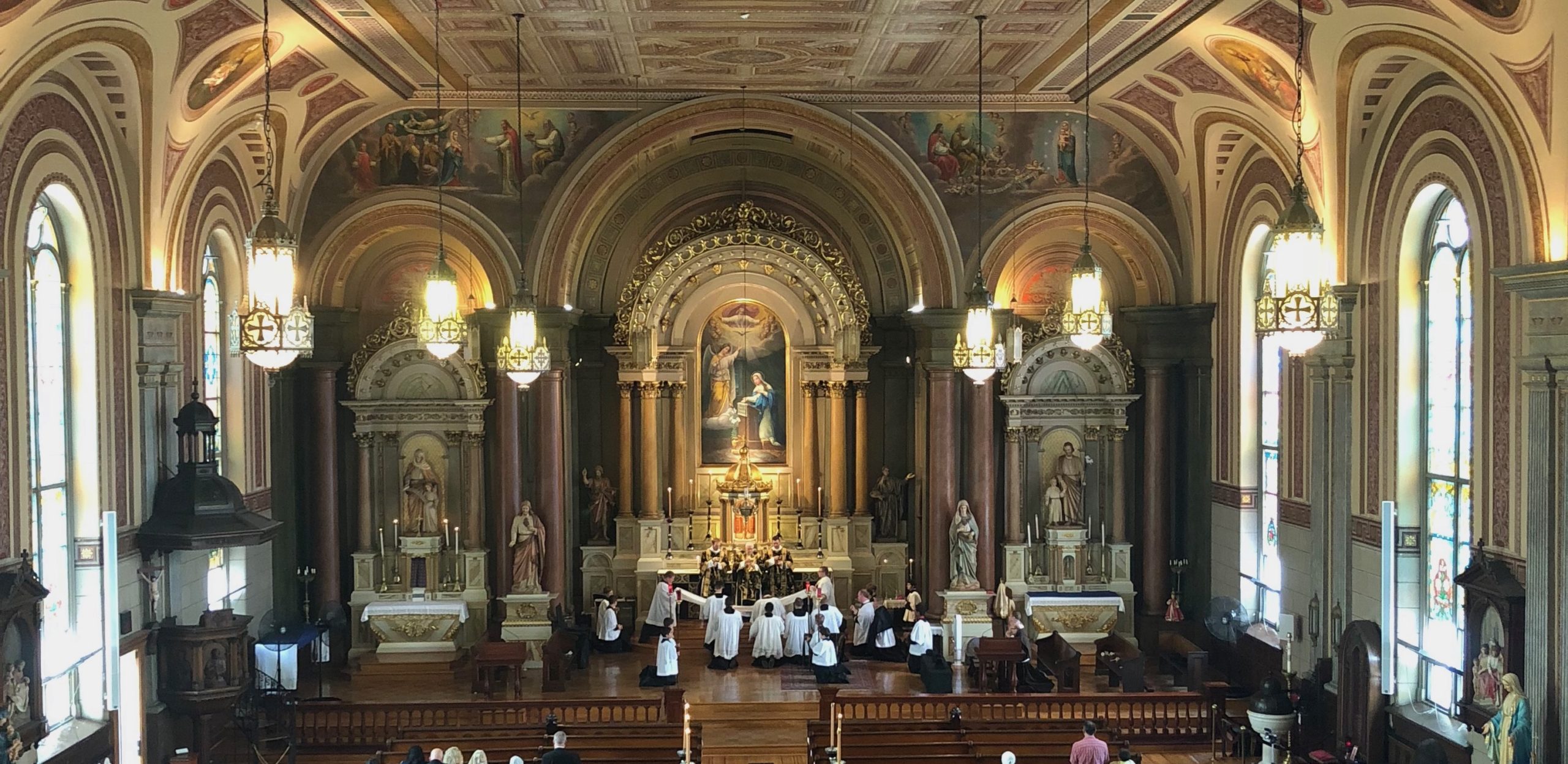Posted on August 16, 2020 View all news
Laudetur Jesus Christus! Gelobt sei Jesus Christus!
Sia lodato Gesù Cristo! Praised be Jesus Christ!
A topic I have been meaning to address for a while, but during the coronavirus shutdown, we installed what is known as a houseling cloth at Old St. Mary’s. Sacred Heart has had this for a few years at this point. Some have asked what this is. Here is a brief explanation from the Catholic Encyclopedia.
“The “Rituale Romanum” (tit. iv, cap. ii, n. I) prescribes that a clean white cloth be extended before those who receive Holy Communion. This cloth is to be of fine linen, as it is solely intended as a sort of corporal to receive the particles which may by chance fall from the hands of the priest. It is usually fastened on the sanctuary side and when in use is drawn over the top of the rail. It should extend the full length of the rail, and be about two feet wide, so that the communicant, taking it in both hands, may hold it under his chin. Its very purpose suggests that it is not to be made of lace or netting, although there is nothing to forbid its having a border of fine lace or embroidery. Instead of this cloth a gilt paten, larger than the paten used at the altar, to which a handle may be attached, or a small gilt or silver salver, or a pall, larger than the chalice pall, may be used. These latter are usually passed from one communicant to the other, and when the last at the end of the rail at the Gospel side has received Holy Communion the altar boy carries the paten to the first communicants at the Epistle side. A consecrated paten may never be placed for this purpose in the hands of lay persons.”
This altar rail cloth is actually a much older practice than the communion paten, the metal disc with a piece of wood attached to it that is held under your chins. There was a time when it was questioned as to whether or not the practice of the communion paten could replace the houseling cloth or even be used! Though the communion paten, or plate, has become the norm, it was only a toleration at one point in time.
The purpose of both, as the Catholic Encyclopedia states, is to ensure that no particles fall from the ground. We believe that so long as the host maintains the accidents of the appearance of bread, that it is truly the Body of Christ. Regardless of how small a particle may be. Thus, the importance that we catch in a dignified manner any particles that may flake off.
This is also why we ask that masks be removed when it comes time for you to receive Holy Communion as it becomes easy for the host to fall to the ground if we are working around masks!
When approaching the rail, if you are receiving on the tongue, you should place your hands under the cloth and gently pull it in your mouth’s direction. If you are receiving in the hand at the revised Mass, please be sure not to place your elbows or forearms on this cloth. The altar rail, and thus the houseling cloth, become the extension of the altar for the people, the place in which they receive Christ. It is the point where heaven and earth meet.
May we do well to examine how we present ourselves at the altar rail and how we can receive Holy Communion more worthily. Whether in our spiritual preparation of prayer, fasting, and confession or in our physical preparation and how we care for the Lord’s body in our reception. May we receive Him well in both soul and body so that we may be open to the graces He seeks to give to us. Have a blessed week ahead!

